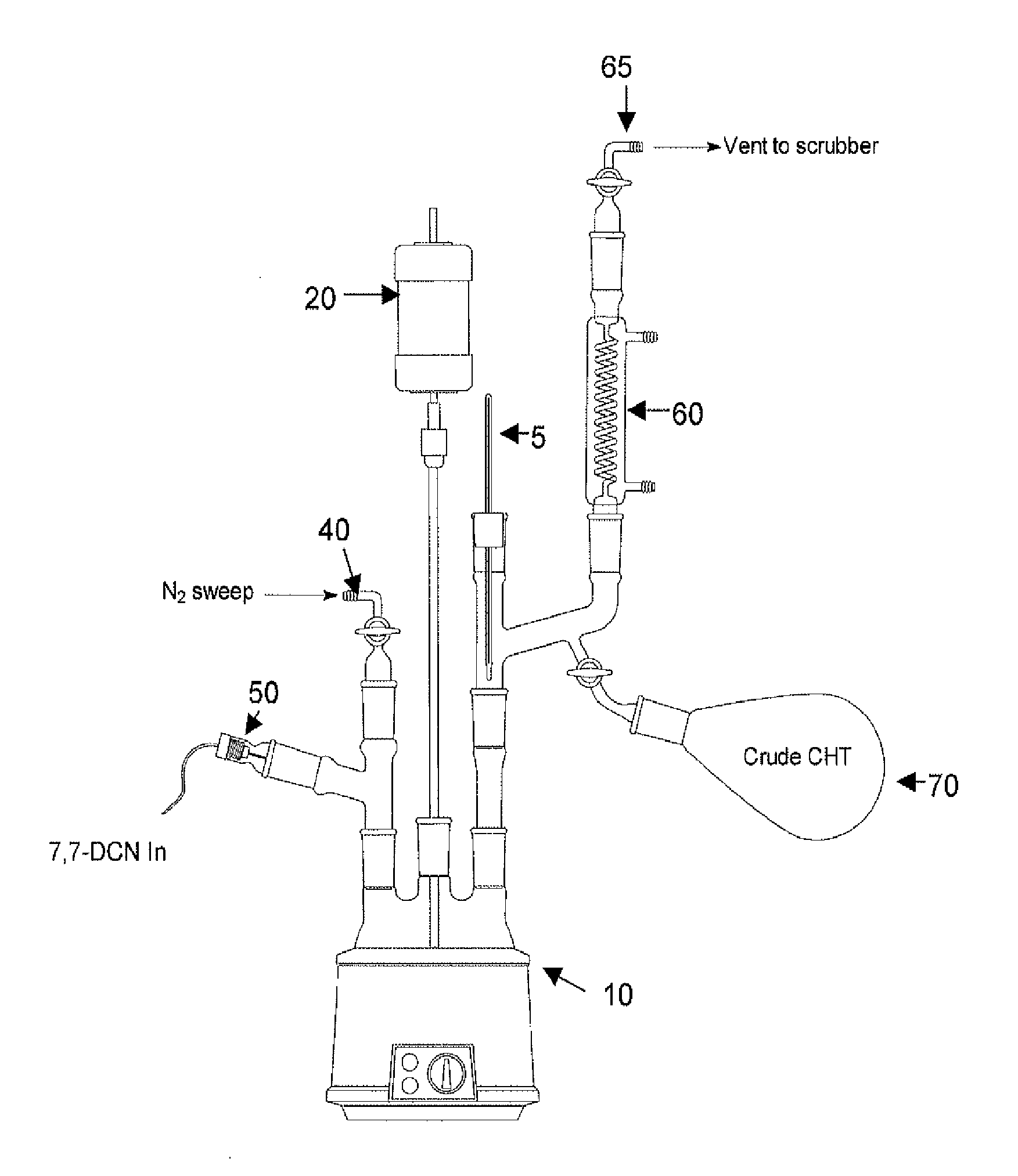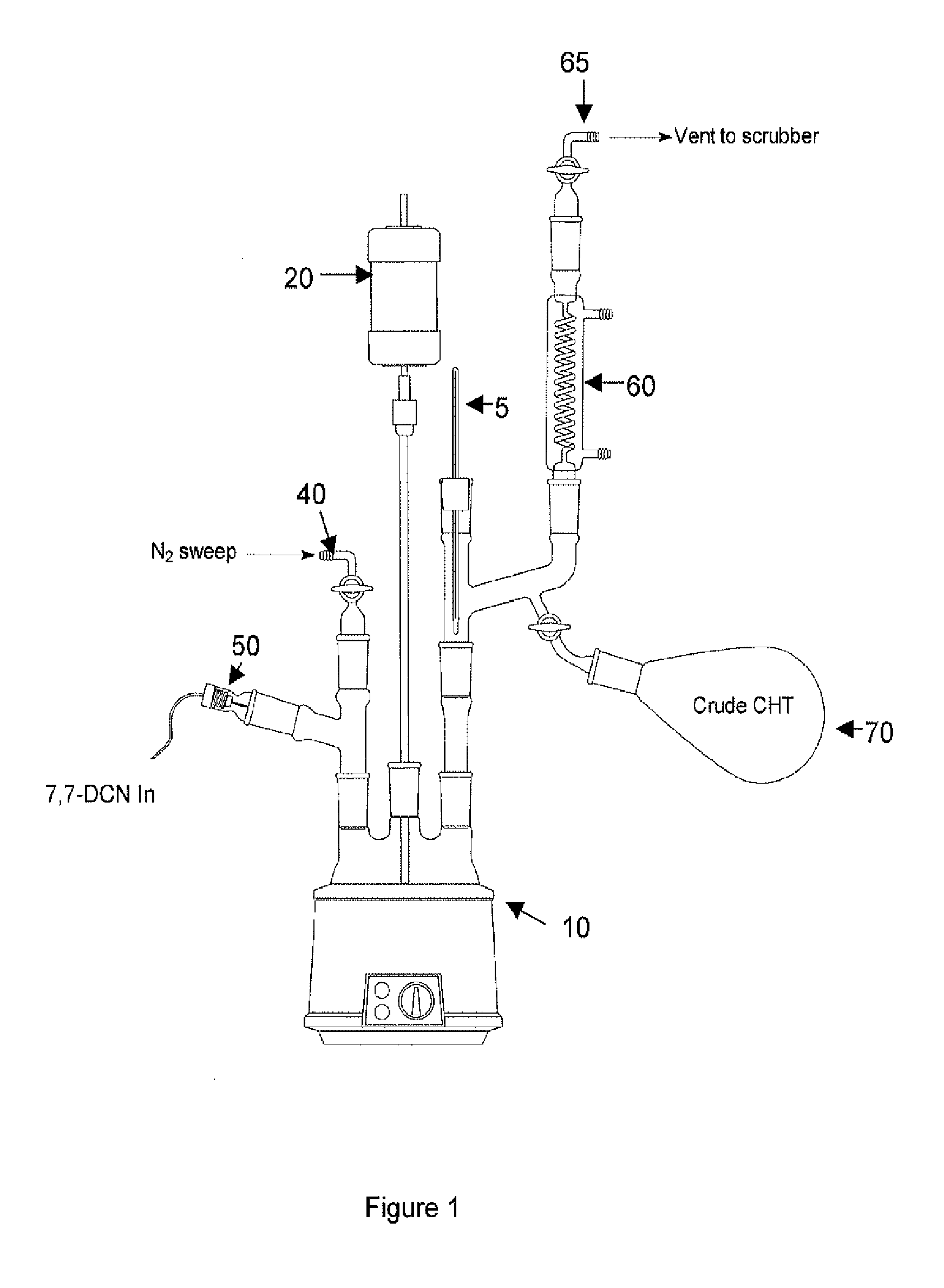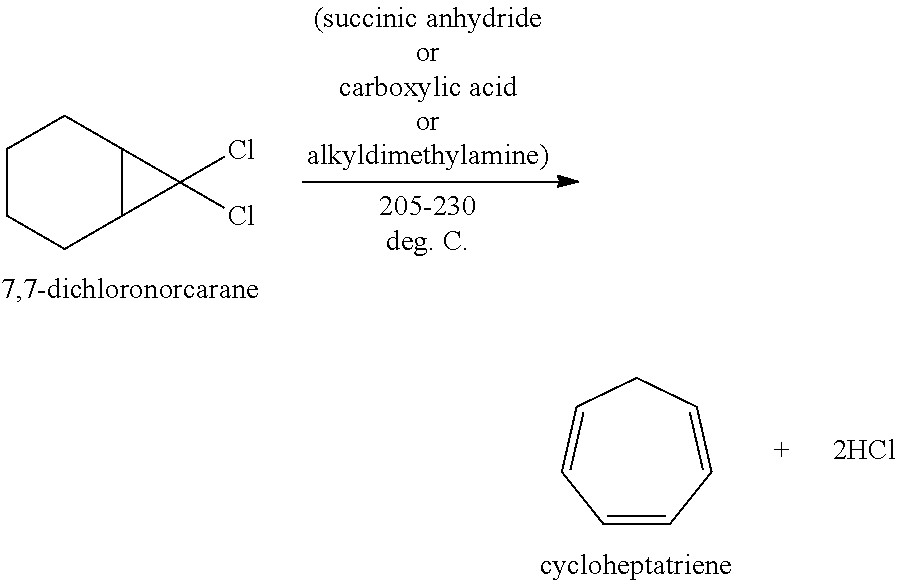Methods for producing cycloheptatriene
a technology of cycloheptatriene and cycloheptatriene, which is applied in the direction of hydrocarbon from oxygen organic compounds, chemistry apparatus and processes, organic chemistry, etc., can solve the problems of high energy consumption, repeated use of high temperature, and expensive equipment for surviving high temperatures
- Summary
- Abstract
- Description
- Claims
- Application Information
AI Technical Summary
Benefits of technology
Problems solved by technology
Method used
Image
Examples
example 1
[0010]To a 1000-mL, 4-neck round bottom flask fitted with a mechanical stirrer, nitrogen purge line and distillation condenser leading to a caustic scrubber was added 276.5 g of C16-ASA (C16 alkenyl succinic anhydride) followed by 187.5 g (1.14 mol) of 7,7-dichloronorcarane. The stirred mixture was heated to approximately 220 deg. C. under a slight nitrogen purge (1-2 bubbles / sec observed in the scrubber). The distillate was collected as it was formed in the distillation adapter. After 9 hours, the reaction was allowed to cool. The cycloheptatriene thus obtained was isolated as a pale yellow liquid: crude yield 81.6 g (0.886 mol, 81.6%).
example 2
[0011]A 3-L, 4-neck round-bottom flask 10 was equipped with a mechanical stirrer 20, thermocouple 5, nitrogen inlet 40, MASTERFLEX addition pump 50 and a distillation head 60 with associated distillate collection flask 70 and vent 65 (see the FIGURE (FIG. 1)). The flask 10 was charged with 762 g C16-ASA followed by 605 g of 7,7-DCN via MASTERFLEX addition pump 50. The nitrogen sweep rate via nitrogen inlet 40 and vent 65 was set at approximately 100 mL / min and the mixture was heated to approximately 215 deg. C. Once CHT collection in collection flask 70 was evident, the DCN addition via the MASTERFLEX addition pump 50 was continued at a rate of approximately 1.4 g / min. After 96-hr, the reaction was halted. Total processed 7,7-DCN was 5.4 kg resulting in a total of 2.2 kg crude CHT collected (73% crude yield).
[0012]This invention is advantageous in that it provides methods for producing cycloheptatriene at temperatures of about 205-230 deg. C. or 210-225 deg. C., which is much lower ...
PUM
| Property | Measurement | Unit |
|---|---|---|
| Volumetric flow rate | aaaaa | aaaaa |
| Acidity | aaaaa | aaaaa |
Abstract
Description
Claims
Application Information
 Login to View More
Login to View More - R&D
- Intellectual Property
- Life Sciences
- Materials
- Tech Scout
- Unparalleled Data Quality
- Higher Quality Content
- 60% Fewer Hallucinations
Browse by: Latest US Patents, China's latest patents, Technical Efficacy Thesaurus, Application Domain, Technology Topic, Popular Technical Reports.
© 2025 PatSnap. All rights reserved.Legal|Privacy policy|Modern Slavery Act Transparency Statement|Sitemap|About US| Contact US: help@patsnap.com



